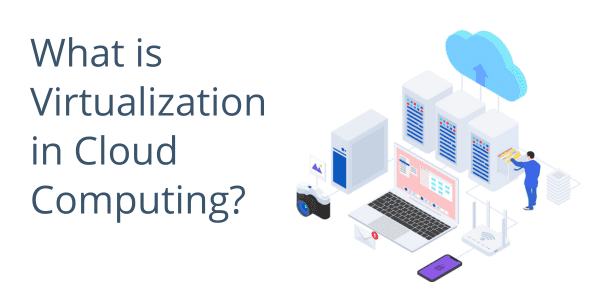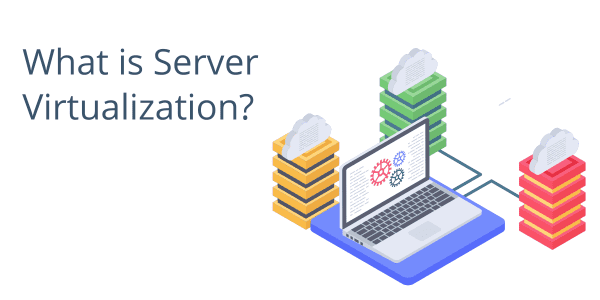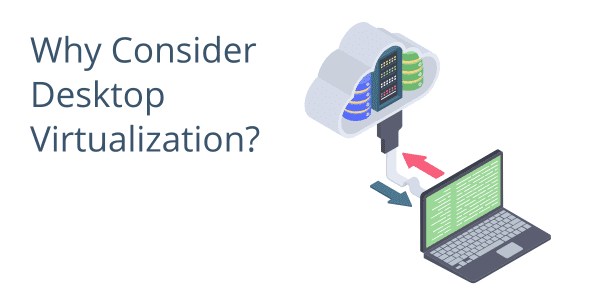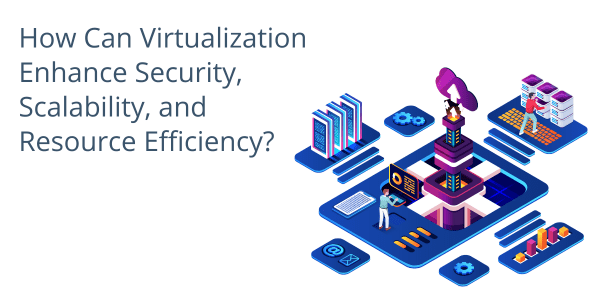
21 Jul Understanding the Role of Virtualization in Cloud Computing
In cloud computing, virtualization plays a pivotal role. But what is virtualization and how can it benefit your small to mid-sized business?
 What is Virtualization in Cloud Computing?
What is Virtualization in Cloud Computing?
Simply put, virtualization involves creating virtual versions of physical computing resources.
This abstraction from physical hardware offers increased flexibility and scalability. Allowing multiple virtual instances to run concurrently on a single physical machine, maximizes resource utilization.
How is Virtualization Beneficial for SMBs?
Utilizing virtualization can simplify the direct IT demands on your business whether those are budgeting, personnel, or productivity concerns.
Business owners who take advantage of virtualization benefit from:
- Reduction in capital expenses, IT overhead, and operating costs.
- Minimized downtime
- Increased productivity
- Quicker provisioning of resources and applications
Let’s look at specific types of virtualizations commonly offered to small businesses by cloud hosting vendors.
 What is Server Virtualization?
What is Server Virtualization?
Server virtualization divides one physical server into multiple virtual servers. Each of the virtual servers operates independently. This allows it to act as a standalone unit with its own set of resources and operating system.
This leads to optimized resource utilization, reduced costs, and a seamless scale-up of computing capacity based on demand.
How Does Application Virtualization Improve Efficiency?
Application virtualization is another aspect, focusing on isolating applications from the underlying operating system and hardware.
There are two types of application virtualization:
- remote
- streaming
Application virtualization enhances compatibility and streamlines application updates, making software management more efficient and consistent across different platforms.
What is the Impact of Network Virtualization?
There is also an option to use network virtualization. This abstracts the physical network infrastructure, allowing multiple virtual networks to coexist on a shared physical network.
Network virtualization offers flexibility and simplified management, enabling the creation and management of complex networks effortlessly.
 Why Consider Desktop Virtualization?
Why Consider Desktop Virtualization?
Desktop virtualization, also known as Virtual Desktop Infrastructure (VDI), is a technology that detaches the user’s desktop environment from their physical machine. Instead, it is hosted within a virtual environment in the cloud.
This strategy is particularly attractive for SMBs for several reasons:
Desktop virtualization centralizes data storage, so it reduces the risks associated with data loss or theft posed on individual devices. It also facilitates better control over access permissions, enhancing the security of sensitive information.
VDI simplifies the administration of user environments. Changes can be made in one place and automatically applied across all virtual desktops. This not only saves time but also ensures consistency across the organization.
Since the desktop environment is hosted in the cloud, it can be accessed from any device with an internet connection. This promotes flexibility and allows employees to work from anywhere, accommodating remote or offsite work trends.
Instead of manually updating software on each machine, updates and patches can be applied centrally to the virtual desktop environment. This reduces downtime and ensures all users have access to the latest software versions.
With VDI, businesses can extend the lifespan of older hardware or adopt a Bring Your Own Device (BYOD) policy, since the majority of the processing is done in the cloud. This can significantly reduce hardware and maintenance costs.
In the event of a disaster, virtual desktops can be recovered quickly and easily, ensuring minimal disruption to business operations making them a smart part of any organization’s disaster planning.
Read even more about cost savings and security improvements from virtual desktops.
What is Storage Virtualization?
Lastly, storage virtualization abstracts physical storage devices into a unified virtual storage pool. This pool can be allocated as required, improving storage efficiency and enabling advanced features like replication and disaster recovery.
 How Can Virtualization Enhance Security, Scalability, and Resource Efficiency?
How Can Virtualization Enhance Security, Scalability, and Resource Efficiency?
Virtualization offers enhanced security by providing isolation between virtual instances, which mitigates malware spread and data breaches. It also allows SMBs to scale their resources rapidly based on demand, ensuring optimal performance and cost efficiency.
By consolidating multiple virtual instances on a single machine, virtualization maximizes resource utilization. This can reduce hardware costs, minimize power consumption, and optimize your data center footprint, creating a more sustainable IT infrastructure.
How Does Virtualization Simplify IT Management?
Virtualization simplifies IT management by centralizing administration tasks and reducing complexity. It streamlines provisioning, monitoring, and maintenance of virtual resources, saving time, and improving operational efficiency.
In Conclusion
Virtualization is a foundational technology within cloud computing, offering tangible benefits to SMBs in terms of scalability and security.
By understanding and leveraging different types of virtualizations, businesses can fully harness the potential of the cloud by driving growth, increasing productivity, and reducing capital expenditures.
Need Help Making Your Network More Robust, Increasing Business Productivity, Or Capping Escalating Technology Costs?
Our trained team of cloud computing experts can help you by developing the most secure and efficient cloud-based storage and processing solutions for your business.
Let us demonstrate exactly what Cyberlink can do for you – using your own data and workflows.
 What is Virtualization in Cloud Computing?
What is Virtualization in Cloud Computing? What is Server Virtualization?
What is Server Virtualization? Why Consider Desktop Virtualization?
Why Consider Desktop Virtualization? How Can Virtualization Enhance Security, Scalability, and Resource Efficiency?
How Can Virtualization Enhance Security, Scalability, and Resource Efficiency?